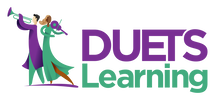Designing and Developing Learning Materials for ILT and VILT ExperiencesWhile the learning world has seemingly moved on to digital modalities for learning delivery, the reality is that most instructional designers are still charged with designing workbooks, facilitator guides, and job aids for in-person or virtual classroom use. There’s little guidance for creating these materials and no standards to follow. Instructional designers are left to their own devices or random guidelines handed down to them that were created by long-gone colleagues. The truth is there is guidance for creating these materials, but we must pull from what little has already been written and combine those with insights culled from other industries.
|
In this session, we’ll look specifically at designing and developing workbooks, facilitator guides, and job aids. The scope includes planning, writing, and developing them using the software you already have like Microsoft Word and PowerPoint, along with a few new ones to add to your toolbox. We’ll begin with a case study and determine what types of materials would best support learners before, during, and after a learning experience. Then we’ll create a plan for creating our materials, which will include a strategy, a methodology, and a suggested timeline for each type.
Next, we’ll take a user-centered approach to lay out content on the page so that learners can easily navigate the documents. We’ll apply a framework to designing facilitator guides and workbooks based on best practices for designing materials for in-class use. We’ll also explore writing techniques for our materials, considering qualities such as voice, style, and perspective. You’ll get the opportunity to apply these strategies to a sample workbook and facilitator guide. We’ll also discuss strategies for converting these materials for use in other modalities like the virtual classroom, asynchronous eLearning, or blended learning approaches. Finally, we’ll explore quality assurance and control strategies to ensure that the documentation you produce is error-free. You’ll walk away with strategies, templates, and examples that you can reference and use back on the job.
Next, we’ll take a user-centered approach to lay out content on the page so that learners can easily navigate the documents. We’ll apply a framework to designing facilitator guides and workbooks based on best practices for designing materials for in-class use. We’ll also explore writing techniques for our materials, considering qualities such as voice, style, and perspective. You’ll get the opportunity to apply these strategies to a sample workbook and facilitator guide. We’ll also discuss strategies for converting these materials for use in other modalities like the virtual classroom, asynchronous eLearning, or blended learning approaches. Finally, we’ll explore quality assurance and control strategies to ensure that the documentation you produce is error-free. You’ll walk away with strategies, templates, and examples that you can reference and use back on the job.
Objectives
By the end of this session, you will know how to:
- Implement strategies for designing user-centered workbooks, facilitator guides, and job aids.
- Adapt materials for different modalities.
- Apply various writing approaches to workbooks, facilitator guides, and job aids.
- Create quality assurance and control strategies to reduce the number of errors found in materials.
target audience
Learning designers who create materials for instructor-led and virtual environments.
logistics
Duration: 2 days (12 hours)
Format: 2
Format: 2
- Day 1: 3 hours live, online + 3 hour individual, off-line assignment
- Day 2: 3 hours live, online + 3 hour individual, off-line assignment
Benefits
Advantages of receiving training as a Story Guide:
- Gain skills in designing key instructional materials.
- Learn to use common tools like Microsoft Word and PowerPoint, and how new one's like A.I. and Canva can support your approach.
- Develop strategies for efficient material creation.
- Focus on making learner-friendly materials.
- Apply best practices for in-class material design.
- Learn to convert materials for various learning formats.
- Access useful templates and examples for future projects.
Section |
Dates |
Registration |
DLM-001 |
August 26, 27 |
Opening in April 2024 |
DML-002 |
Feb 17, 18, 2025 |
Opening in October 2024 |




